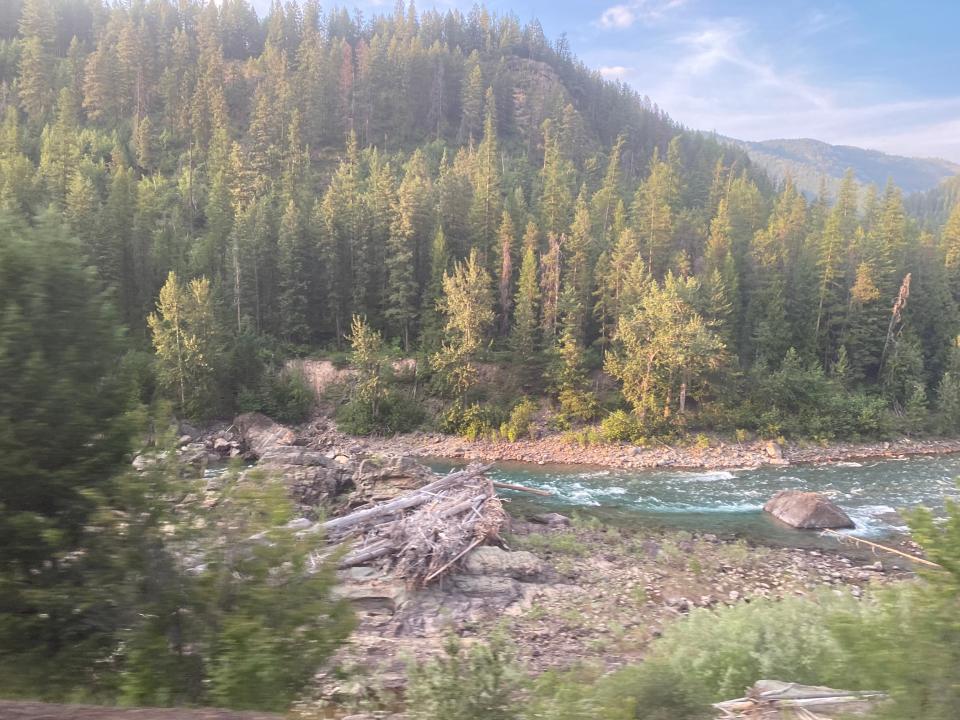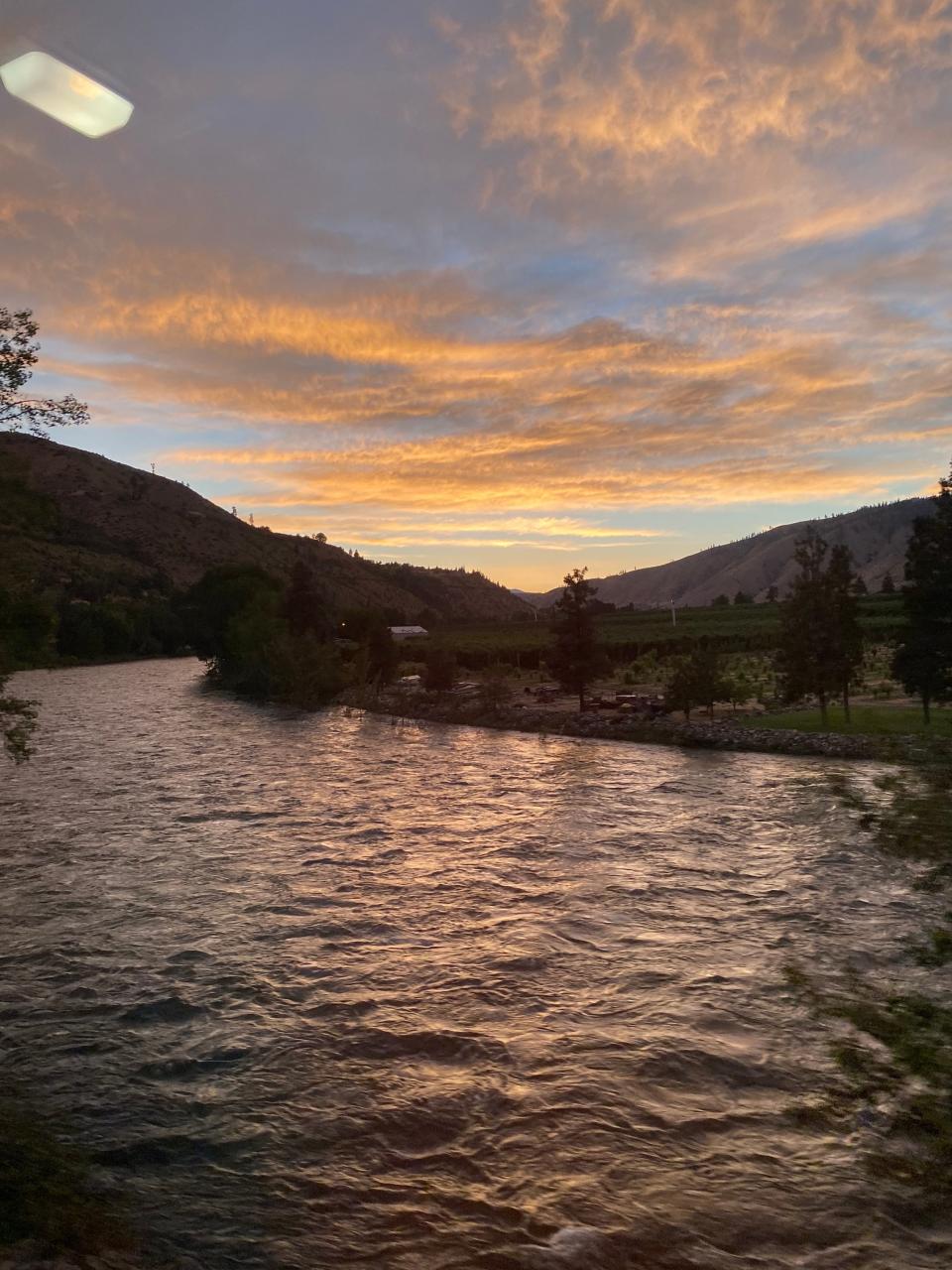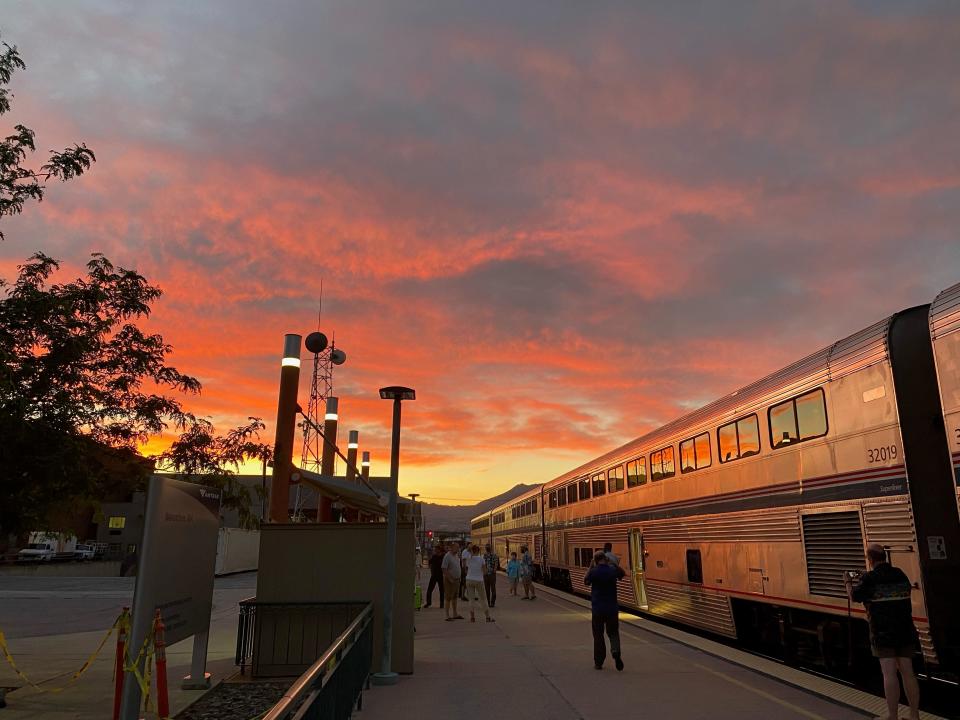Rediscovering the Pleasure of Train Travel Post-Vaccine
After I got my COVID-19 vaccine, Chicago’s Union Station quickly became the center of my life. I never fly, due to an intense fear and a zealous belief that as humans, the sky is none of our business and we should stay out of it. But the isolation of lockdown made me determined to travel. So I moved to Chicago to be closer to the country’s busiest Amtrak train station.
I ditched the Denver apartment I’d been locked in while I wrote a book, waiting for the salvation of a vaccine. As I wrote and waited, I saw almost no one. I didn’t go to the grocery store. Terrified of dying of the virus, I barely took walks, catching sunshine when I took out the trash.
After vaccination, the center of my world shifted from my couch and my bed to a bustling, gilded train station. For my first big trip, I decided—I needed—to ride Amtrak’s Empire Builder line straight to Seattle.
During elementary and middle school, I lived in a suburb in the shadow of this Pacific Northwest city. My parents were hungry for our young family to experience everything, organizing trips to California, Oregon, and Vancouver. As a child, my world here was more adventurous than the life I’d built for myself as an adult. In part, I committed to the 46-hour train ride to see if I could reclaim that girl who once thought she was infinite, before adult stress and trauma and a global pandemic made her evaporate slowly. I’d need to bring her with me on my travels.
It might sound strange that a person looking to expand her world would choose not to fly, but after a year of feeling desperately disconnected from myself and others, I wanted to reunite with the land and its people in the way that feels most intimate.
Amtrak is full of contradictions, something anyone looking to demystify train travel should know. It can feel gritty, stripped to the basics, evoking stories my Black southern family told me about riding buses and trains for days, with cold chicken and potato salad for meals. But there’s also an elegance that you can’t get anywhere else, even when you’re in coach. Denver’s Union Station has a graceful 1950s feel, with live jazz and a restaurant where you can load up on raw oysters and cocktails before boarding. For a writer like me, hours staring out the window to the vast plains of Montana can invoke inspiration from all the storytellers who came before me, many of them Indigenous, who found their inspiration from the American West.
My journey from Chicago to Seattle started in The Metropolitan Lounge, a Union Station marvel that’s only available for Amtrak’s Business Class, Guest Rewards Select Plus, and Select Executive members, as well as sleeper car passengers. Its high-speed internet, work stations, television, a children’s play space, luggage storage services, and showers (Chicago’s Union Station also has a lactation room, available to everyone) make it the perfect place to recharge before connecting to a different train on a longer-haul journey Westward.

I made dinner reservations when I boarded, and was soon sipping a glass of cabernet sauvignon while sitting down to a lobster and crab cake, Amtrak Signature Steak (well-flavored and -cooked by any standards) and carrot cake. But the best part of the dining car is the conversation. Unless your traveling group contains four people, you’re seated next to other passengers. (You can also request your meal be sent to your room, a popular option for added COVID-19 precautions.) For breakfast—a filling French toast with berries, a side of bacon, and Starbucks coffee—I sat down with a family of three from Tennessee. On their way back from Seattle, they planned to stop in Chicago to tour colleges for the eldest son, while the younger daughter flew back home. During another dinner, two grandparents gushed about their grandchildren and politely asked me if my father was planning on going back to the “old country.” Being a person of color on certain Amtrak lines is an interesting experience. It’s never been unpleasant or unsafe for me, just a bit bemusing.
On the train, the miles feel earned. You feel yourself roaming over every bit of land that exists between your starting point and your destination. When it’s not pitch-black outside, you can see the towns and people you’re passing. As we chugged our way through Minnesota in the dark hours of the morning, I found myself searching for stars and finding them.
The observation car is the perfect place to see the land. It’s also where sleeper car and coach passengers merge, and where I got more insight into why people chose Amtrak over flying. Surprisingly, fear of flying wasn’t a factor for anyone I spoke with.
Riding through a shock of yellow canola fields, abandoned and dilapidated homesteads from the 19th centuries, and the plains covering the Bakkan Formation—the largest continuous oil resource in the lower 48 states—a private pilot working in the oil business told me he rode Amtrak because he hated commercial flying, namely how strict and policed it was. He told me he loved the train so much, he used to routinely make the 18-hour commute from Columbus, Wisconsin to Willingston, Montana. “The plane would be faster,” he admitted. “But,” he added, gesturing out to the desert of green and brown grass dotted with menacing oil tankers, “I’d miss so much.”

A mother with young children from New York found herself concerned about their family’s carbon footprint. She tried train travel— according to the 2021 U.S. Department of Energy Data Book, "Amtrak is 46% more energy efficient than traveling by car and 34% more energy efficient than domestic air travel"—and she, her husband, and her children ended up loving it.
One might assume kids would revolt when faced with two days on a train, but most of the children and infants I saw were much happier and content than children on planes, who squirm and cry from discomfort and confusion. These children were relaxed, watching movies, eating mac and cheese, and moving freely throughout the train with binoculars to see the sights. The entire train seemed besotted with a happy bonnet-wearing Amish baby, whose cuteness was a topic of conversation at dinner.

Two brothers from Oregon—who I bonded with because we were among the few non-white people onboard—liked taking the train because it was adventurous. One was a professional gamer, the other a legal weed grower, and they told me that of Amtrak’s 35 train routes, there were only four they hadn’t ridden yet. “When I’m on a train, I get up early and go to bed late so I can experience everything. I just love trains,” the gamer told me enthusiastically. “You can see the whole country, there’s beautiful views, you meet new people… it’s an incredible adventure.”
As we passed through Glacier National Park in Montana, I told the Amish couple I was sitting with in the observation car—Amtrak hosts many Amish and Mennonite passengers, since they usually don’t fly, mission trips and personal decisions being rare exceptions—that I felt so close to God here, riding a train through the mountains of the park, complete with streams and deer and Aspen trees with mystical eye-shaped knobs. The husband, whose eight other family members were visiting the park together, agreed. “Look at how close to the sky we are,” he said. “It makes perfect sense.” It’s funny isn’t it, that one can feel closer to the sky while on land rather than 36,000 miles in the air on an airplane? But both I and the Amish man felt the presence of something, and maybe it’s better not to think too hard about why.

The difference between coach and sleeper cars becomes stark the longer the trip goes on. Without private rooms to retreat to, cramped people in coach sometimes tend to build deeper bonds. During my previous rides in coach, I watched movies with fellow passengers, sharing earbuds for hours through the night.
I spoke to a passenger who was riding coach, a young man from Maine looking for adventure after getting his own vaccine, looking to avoid the “sterile and homogeneous” feel of airplanes. “When I was a kid I thought Maine was the center of the world,” he said. “But I’m realizing there are so many other centers of the world.”
He and his fellow passengers, he told me, had started an impromptu party the night before in coach. “We just made this jackpot of stories, food, and a little bit of liquor. It almost felt like a college dorm. This is home for two days, after all.”
By the second day of my trip, my relationship to time had started to shift. When someone told me it was “only” eight hours until we reached Spokane, Washington, I got excited, feeling like we were almost in Seattle. I was eager to leave the confines of the train, but a little wistful knowing I was leaving a truly beautiful world behind.

As we got closer to Washington, the place that I used to call home, I started feeling like the girl whose world was infinite again. I know I wouldn’t have had that feeling if I’d flown. I was more well-rested, and the time I’d spent en route had given me time to reflect and write. But most importantly, it had given me time to reacclimate myself to traveling and to myself.
I got excited for my plans—a stay at the Palihotel right next to Pike Place Market, whale-watching in the San Juan Islands, and a trip to my old childhood home, to see the place that built the better version of me.
As the train got closer to King Street Station, I gazed out at the Puget Sound, remembering the little girl who used to scream herself hoarse as she rode a speedboat across those waters. After two days riding across the Great Plains, the unknowable mountains of Montana, and the dense forest of the Pacific Northwest, I had found a piece of her again, a piece of the humanity I’d lost during one of the heaviest times of national grief I’d ever lived through.
After being vaccinated, so many of us are traveling with intentions, insight, and anxieties we didn’t have before COVID forced us to pause. It makes sense that train travel would feel right. By its nature, it forces you to slow down, to ask questions of yourself and others, as the train carries you forward—either homeward-bound, to a new adventure, or, if you’re like me, somewhere in-between.
Originally Appeared on Vogue

